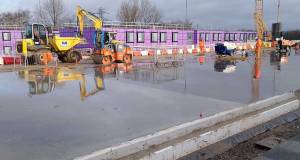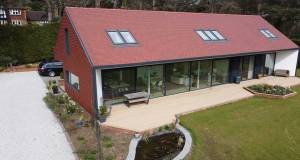
- Marketplace
- Posted
Munster Joinery publishes first Irish window EPD
Munster Joinery has published the first environmental product declaration (EPD) for a window under the Irish EPD system.
The EPD was published for the company’s Passiv uPVC window and is available to view on the Irish Green Building Council’s EPD database.
“This EPD has allowed Munster Joinery to measure its performance and set goals in regard to sustainability while demonstrating our commitment to reducing carbon emissions,” said Marlene O’Mahony, quality manager with Munster Joinery. “We expect to publish EPDs for our other product ranges in the coming months.”
An EPD is a standardised report containing data on the environmental impacts of a product or material over its lifetime. This data provides construction industry professionals with a transparent source of information, allowing the comparison of diff erent products under a common set of environmental performance indicators.
Th e EPD is based on data generated by a life cycle assessment (LCA), which can measure the sustainability of the product across various stages – production, installation, use and end of life. The production stage assesses the impacts of raw material supply, transport and manufacturing. Seven different impact categories are used: climate change, depletion of abiotic resources (both fossil fuel and elemental), ozone depletion, photochemical oxidation, acidifi cation of land and water, and eutrophication.
As the availability of EPDs for construction products increases, specifiers will be able to access quantified environmental information detailing the impacts of materials in buildings. This will allow more informed decisions in procurement.
“Munster Joinery aim to be at the forefront of this drive to make accurate, unbiased sustainability data available to the market,” O’Mahony said. “This reflects our wider sustainability policy. All our product ranges meet NZEB requirements as a minimum and eight product lines are certified by the Passive House Institute in Germany. We aim to make sustainability, carbon neutrality and energy effi ciency accessible to the built environment.
“Our operations are tailored to minimise the use of energy and water, use materials that are environmentally friendly, use recycled materials wherever possible, minimise waste and continually reduce emissions.
“Much of our energy needs are met by two wind turbines with an electrical output of 4.2 megawatts. A biomass combined heat and power (CHP) plant with a capability of 12 MW thermal and 3 MW electrical also contributes significant amounts of green energy to the plant.”
Related items
-
 New Ejot profile cuts thermal bridging losses by 25mm insulation equivalent
New Ejot profile cuts thermal bridging losses by 25mm insulation equivalent -
 Build Homes Better updates Isoquick certification to tackle brick support challenge
Build Homes Better updates Isoquick certification to tackle brick support challenge -
 Ecological Building Systems expands UK and Irish straw panel construction with EcoCocon deal
Ecological Building Systems expands UK and Irish straw panel construction with EcoCocon deal -
 Focus on better buildings, not better spreadsheets
Focus on better buildings, not better spreadsheets -
 MBC offers total passive house envelope solutions
MBC offers total passive house envelope solutions -
 Grant’s Aerona R290: A next-gen heat pump designed for the Irish climate
Grant’s Aerona R290: A next-gen heat pump designed for the Irish climate

